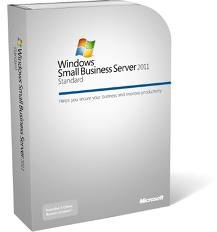 Having put in two of these beasties I’ve got a fairly good idea how they work and where the problems are. So far, there are very few reasons NOT to upgrade from your 2003 or even your 2008 Small Business Server.
Having put in two of these beasties I’ve got a fairly good idea how they work and where the problems are. So far, there are very few reasons NOT to upgrade from your 2003 or even your 2008 Small Business Server.
Basic setup take about 8 hours with updates, reboots and just the usual typing required to get the system working for the installation in question. Having to reconfigure Exchange 2011 to allow larger emails is the only ‘must do’ and the loss of the ‘global’ POP3 connector is annoying.
Once everything is in you’ll have a lengthy process as you migrate (or at least prepare to) from your previous server. You could migrate directly but honestly we all know that’s a road few travel happily. Better to backup and restore, it’s longer and annoying but never ends in heartbreak, frustration and possible data lose. Keeping your subnet the same as the old network IPs help in the even you have a few forgotten static devices (like phone systems, plotters or some storage device).
With each workstation you’ll want to run the migration wizard (locally save the files) and backup Outlook to a PST file. Since you’re keeping the same subnet joining is a simple as http://connect from your IE install. Copying data will take longer than anything else but it’s unavoidable.
For the time and dollars it’s a good upgrade, beats the heck out of SBS2008.
For those BlackBerry users out there the Express server will work in SBS2011 but it takes time and research. Just pretend you doing an SBS2008 install and then do an Exchange 2011 install as well and wait until the process reaches 450MB.. then it auto-magically works.

 Google removed a bunch of malicious apps, most disguised as legitimate apps, from the Android Market after they were found to contain malware. The malware, dubbed DroidDream, uses two exploits to steal information such as phone ID and model, and to plant a back door on the phone that could be used to drop further malware on the device and take it over.
Google removed a bunch of malicious apps, most disguised as legitimate apps, from the Android Market after they were found to contain malware. The malware, dubbed DroidDream, uses two exploits to steal information such as phone ID and model, and to plant a back door on the phone that could be used to drop further malware on the device and take it over.